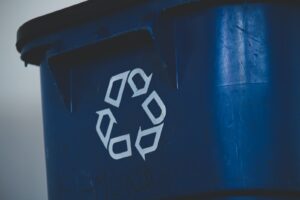Over the past decade, concern about the environment has brought with it a huge upsurge in recycling in Australia and all over the world.
 However, long before our growing amounts of waste became an environmental concern, recycling was a portion of every day life. Resources are not as easily available as they’re now so folks valued them and re used materials where ever possible.
However, long before our growing amounts of waste became an environmental concern, recycling was a portion of every day life. Resources are not as easily available as they’re now so folks valued them and re used materials where ever possible.
Recycling has turned into an increasingly important portion of our society that is modern.
South Australia introduced container deposit laws in 1975 to encourage the return of beverage containers for reuse or recycling.
This legislation aimed primarily to reduce solid waste and trash.
The 80’s and early 90’s saw the addition of kerbside recycling schemes, initially in Sydney, and then propagating to regional places and much more recently to another important centres. These schemes enabled families to separate out after, and common things like paper, glass and aluminium PET, HDPE milk containers, liquidpaperboard milk and juice cartons and steel cans.
Australia became one of the first states to really have a national voluntary recycling plan giving obligations at all rates of industry.
The Strategy also set out several other aims, such as the extension of kerbside recycling schemes to at least 90% of households in major urban areas. From 1990 to 1993, the rate of home recycling in Australia doubled. The progress in recycling rates have continued and are covered elsewhere in this chapter.
Green waste, which constitutes up to half our household waste, is now being recycled using mulching and composting approaches.
Vermiculture (large scale worm farming) is also playing an increasing role in reducing this form of waste – it is even being used to manage human and animal wastes, turning them into fertiliser which can be utilized on the land in place of artificial fertilisers and pesticides.
Recent Developments
To the National Packaging Covenant, ANZECC Ministers agreed in July 1999 to complement and further the achievements of the National Kerbside Recycling Strategy.
The Covenant encompasses the entire packaging chain including authorities, manufacturers, wholesalers, vendors, retailers, fillers and brand owners, who make the crucial decisions on design and characteristics of the packaging.
Many Australian organisations and industries have signed the Packaging Covenant included in their commitment to reducing packaging waste along with their impact on the environment.
A vital part of the Covenant is the business offer of $17.45 million, matched by funds from participating States and Territories, to develop sustainable market based kerbside recycling collection system.
In 2012, the Australian Government introduced the industry financed National Television and Computer Recycling Scheme. The Scheme requires manufacturers and importers to join and fund sector-run arrangements, like the not-for-profit organisation TechCollect, to establish free recycling drop.
Following the success of South Australia, the Northern Territory set up a Container Deposit Scheme in the year 2012. Drink companies opposed the scheme, saying that it was in breach of federal law. In August 2013 yet, the Northern Territory was given a permanent exception from the Mutual Recognition Act, allowing the scheme to continue.
In Victoria Australian Paper started construction of a $90 million paper recycling plant at Maryvale in 2013, to substantially increase the creation of local recycled paper. This will probably be the only superior paper recycling plant in Australia capable of making high quality recycled office and printing papers. The plant will prevent the requirement to import recycled pulp from overseas and reduce the quantity of waste office paper sent to landfill.
The recycling activities of families grew commonly between 1996 and 2009. In 1996, 91% of Australian households said they practised some type of waste recycling and/or reuse task. In 2009, almost all Australian families (98%) reported that they recycled waste and 86% reported that they reused waste. Items commonly reused or recycled by families comprised paper, cardboard or papers (95%), plastic bottles (94%), glass (93%) and plastic bags (90%).
Municipal kerbside recycling services facilitate recycling actions in Australia. In 2009, over 91% of Australian homes used municipal kerbside recycling to recycle waste, a growth from 87% in 2006.
They do not signal how much household waste is recycled while these data tell us the number of families that have recycled at least one thing through the preceding 12 months. A more informative measure would likewise take into consideration the volume of household waste that is recycled (per family) of all household waste.